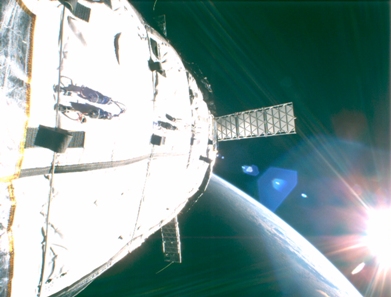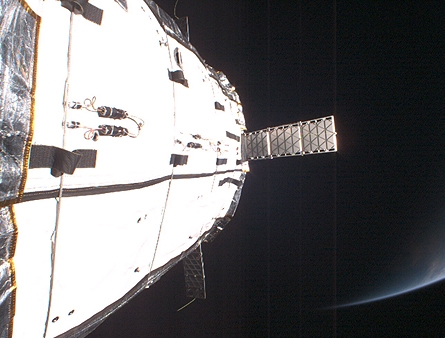These latest images from Las Vegas-based developer Bigelow Aerospace's subscale inflatable habitable space complex technology demonstrator, Genesis I (pictured below), show its exterior and solar panels with the Earth in the background.
Bigelow Aerospace released these images, from Genesis I's seven exterior cameras, on 27 July and 1 August. The demonstrator is orbiting at 550km (350miles) altitude, at a 64˚ plane, after its launch by an International Space Company Kosmotras Dnepr rocket at 14:54 GMT on 12 July. Once in orbit the spacecraft, based on NASA-developed technology, inflated itself, deployed its solar arrays and transmitted data to Bigelow Aerospace’s mission control in Houston.
 |
|---|
|
Above: exterior images from the Genesis I with Earth in the background. |
Bigelow's aim is to validate expandable structures as a certificated spaceflight technology to eventually provide a low-cost, low earth orbit (LEO) space complex that is accessible to the commercial sector.
Data received so far has given the internal temperature of the spacecraft as 26˚C (80˚F) and the spacecraft's global positioning system signal has been acquired, enabling mission control to track it in flight. Genesis I is the first of 6-10 demonstrators planned to be flown by 2010.
By 2012 Bigelow wants to fly its first full-scale habitable structure. The company’s full size habitable complex is called BA-330. Suggested uses for the BA-330, which the company also calls a Commercial Space Complex, include a space hotel.
The Moscow based International Space Company Kosmotras is a joint venture between Russia’s Federal Space Agency and the National Space Agency of the Ukraine. Created in 1997 its Dnepr Space Launch System uses converted SS-18 intercontinental ballistic missiles.
Source: Flight International

















